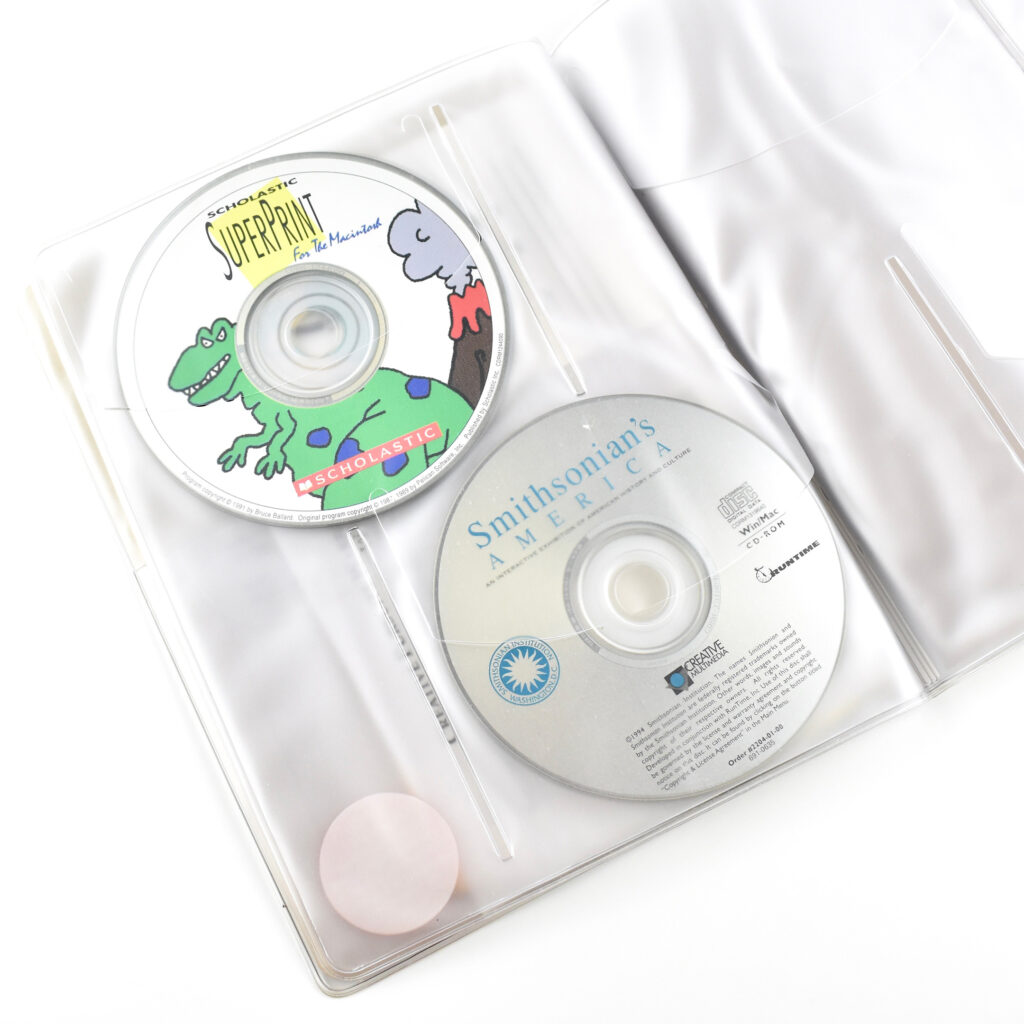Based upon my own recollection, Apple offered a program called the “Apple Educator Advantage” to educators around 1993–2004. I personally participated in the program between 1999–2003. I first recall the program as a low-interest buying program for teachers and school staff that was set up through a school district’s administration center and offered to school staff. Educators were able to make purchases at the same discounted pricing offered to school districts and then pay over time.
The Apple Educator Advantage program was started at a time before Apple Stores existed, before online purchasing was commonplace, and continued to be offered a few years after Apple Stores began opening around the United States.
This CD booklet was likely offered to school staff who participated in the Apple Educator Advantage program. This booklet is made from frosted vinyl and measures 7.5 x 9.25 inches. The front and back flap have internal pockets that hold paperwork such as software licenses, and the two inside pages can hold 2 CDs each.
This CD booklet contains the following software:
- ClassMaster 2.0 (TECHBYTE Internation, 3.5-inch disk)
- Apple Teacher Productivity (CD, 1994)
- Claris Organizer (CD, 1995)
- SuperPrint (1991)
- Smithsonian’s America (1994)
Source: Apple













